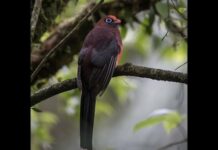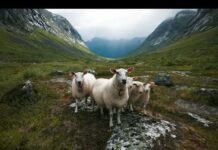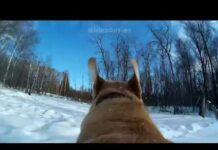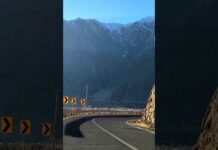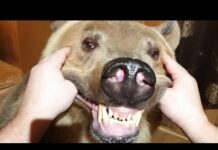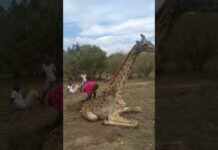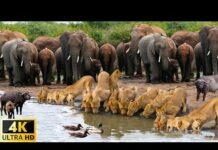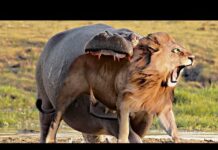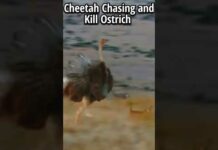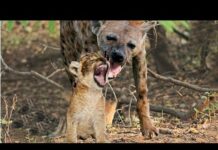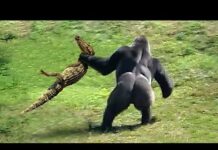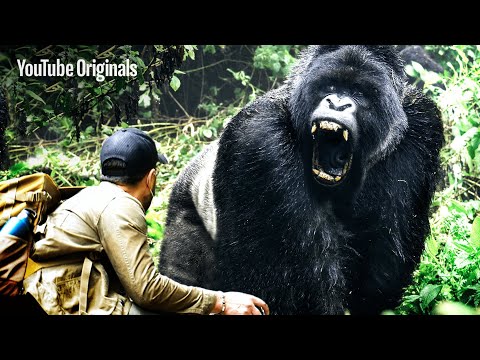Help the Heroic Rangers of Virunga National Park by clicking the donate button or visiting https://rewild.org/projects/virunga Every dollar you donate goes directly from Rewild.org to Virunga’s Ranger Program.
This show contains a some imagery that may not be suitable for all viewers. Parental discretion is advised.
Watch all the Sustainability YTOs here: https://www.youtube.com/playlist?list=PLjq6DwYksrzxZ1dswOpw3dEXH4NTLXwOR
Have you ever wanted to see a REALLY BIG Gorilla? If so, get ready because we found the largest one in the Congo!
On our first Brave Mission, host Mark Vins is teaming up with the Rangers of Virunga National Park to search for some of the last remaining Mountain Gorillas in the Congo – including the largest Silverback in the region. While trekking for these gigantic primates, Mark and his elite camera team must evade poachers and rogue militias in the DRC, while learning how to protect its critically endangered wildlife from extinction. The mission to save Africa’s oldest national park will transport viewers to the front-lines of conservation and invite them to participate in the goal to rewild our planet – which is now more critical than ever.
From Executive Producer’s Leonardo DiCaprio and Mark Vins, comes this thrilling mission to prove that conservation IS action!
To see everything that YouTube and Google are doing to create a more sustainable Earth, please visit https://sustainability.google
00:00:00 Most Dangerous Road
3:05 Trekking for Gorillas
7:09 Gorilla Fight
09:11 Gorilla Feast
10:22 Largest Gorilla in the Congo
14:22 Behind Enemy Lines
17:10 Most Dangerous Mammal in Africa
21:59 A Solution to Save the Park
25:19 Jane Goodall joins Our Mission
(Mark): A war is being fought in the jungles of the Congo. And the outcome will decide the future of Africa's most endangered wildlife. (tense music) (growling) I'm Mark Vins. For the last seven years, I've filmed hundreds of extreme adventures in the name of conservation. (rustling).
But now, my team and I have come to one of the most dangerous places on Earth… …to get face-to-face with the world's most legendary silverback gorilla, a mission that's taken us to the front lines of a deadly conflict. Right now, we are in eastern Congo, on our way to Virunga National Park.
This road that we're on is called the RN2, just notorious for being one of the most dangerous roads in all of Africa, therefore making this drive one of the most dangerous in the entire world. Decades of civil war, an Ebola outbreak, and a recent volcanic eruption have given rise to terrorist organizations and armed rebel militias..
They've been robbing people, kidnapping for ransom, and yes, shooting and killing civilians all the time. In fact, earlier this year, the Italian ambassador to the Congo was killed on this same road. (tense music) So I brought an elite camera team with me to the DRC to investigate.
How these same criminals are destroying Virunga National Park, and threatening the last-remaining mountain gorillas on the planet. And make no mistake about it, a film crew out here is a prime target, and we definitely stand out. If a spotter sees us on the side of the road, and phones ahead, the rebel militias could stop us, and we're sitting ducks.
The only thing keeping us safe on this road are those rangers in that vehicle. (intense music) The story we're about to show you is, in my opinion, the most important story in world conservation right now. And by the end of it, you too will understand how you can play a critical role in this mission. (intriguing music).
Alright, we made it to Kibumba. We're here. Whew. Because the area surrounding the park is largely controlled by rebels, and their activity intensifies at night, even Kibumba, our base camp within the park, falls under strict lockdown, and armed guards patrol the grounds 24/7. (birds chirping).
At first light, we gear up and prepare to ascend the mountain. We'll need to bushwhack our way through dense jungle to search for signs of gorillas. But to be clear, where we're going, there are no fences or safeguards. This is the domain of the largest and most dominant silverback in the Congo. We're led by Papa Didi.
and Papa Augustine, two of the highest-ranking rangers in Virunga. This is an armed-ranger detail, because we could potentially run into militant groups, but more likely so, we could run into poachers. And that's one of the main threats to this very fragile population of mountain gorillas. Are you ever scared to do this job? – Very, very risky now.
Because of presence of many rebels, you see. – But you do it because– – I love gorillas. I have to say, “Okay, if I die, I die.” If the gorillas are safe, okay. – As we advance, we encounter our first test, proving some obstacles are more menacing than they might appear. So, this is a huge ant nest. They call them red ants out here.
They look a lot like a leafcutter ant. Big nest. Ow! Yeah. Mm… Yeah. See that? Ah, yeah, he's biting me. Ah. Yeah, check that. Popped two holes. Ah! They're all up inside my boots. Ah! My gosh. Whoo! Ow! Ah, okay.
(suspenseful music) Clearly, wildlife encounters can be unpredictable. That's why it's so important to have rangers like Papa Didi, with over 30 years of experience under his belt, lead us into the gorilla sector. – They are wild animals. The silverback can believe that you want to catch a baby or to catch a female. If the gorilla charge and do this, don't try to run.
Take a sitting position, look down… When I approach them, I do… (low growl) (low growl) To tell them that, don't be worried, and to try to quiet them. (low growl) Yeah. (suspenseful music) – As we trek deeper into the forest, it gets thicker..
But eventually, we find out first evidence that we're closing in on the gorillas. – These is a nest, where the family has slept last night. – The gorillas build a new nest every single day, because nobody wants to come home to a dirty pile like that. What you're looking at is a key component to the forests' survival..
Gorillas are a keystone species responsible for seed distribution through piles like this. If you come down here, this is a silverback's nest. – If you look carefully, you can find a silver hair. – Ah. Look at that. You could see the size of the sprawl.
This is not the work of a small gorilla. This was the work of a very, very big primate. As we close in, I'm reminded that we're exposed. There will be no barriers between us and the gorillas. And because we share nearly 99% of our DNA with them, we can also share illness and disease. So, we mask up as a precaution. (gorilla chuffing) (Mark panting).
Whew. Okay. We just heard a gorilla right around this bend here. This is it. This is the moment we travelled so incredibly far for, not only to the Congo and up this mountainside, but seven years of adventures have led me to this. (chuffing, rustling) (whispering): There's a gorilla approaching us. It's right here. (suspenseful music).
(chuffing) My hands are shaking. My heart is beating out of my chest. (wild screaming) Oh, my gosh. – They are furious. – Are we safe? Oh, my gosh. Film that, film that. Film his face. Oh, my gosh. Okay, that was insane.
The two silverbacks and his family were fighting for dominance, and you could see where there's actually battle damage. The subdominant silverback is bleeding from the face. (low growl) Oh, whoa. That was definitely not what I expected for our first gorilla encounter, despite the fact I've been told.
gorilla can be aggressively territorial… It's a baby gorilla. …and will viciously protect their families if provoked. (man): Mark, turn around, turn around. (gorilla growling softly) (whispering): It's a silverback gorilla. (suspenseful music) We're gonna get closer.
Look at the size of the bite on his neck. The only thing that's going to give a silverback that big a gash like that is a fight with a dominant male. That tells me this is not the silverback we're looking for. And staring at that wound, I have to ask myself: Do I really want to meet the animal that did that? Despite my fear ringing the alarm bell to turn back, we press on and find ourselves.
in the middle of something I've never seen documented. (serene music) (birds chirping) (whispering): It's a bit of a gorilla feeding frenzy. They found a banana tree and they're literally ripping off the inside of the plant, and eating it from beneath. Gorillas are almost entirely herbivores. And during the dry season, they binge on wild banana trees.
for sustenance and hydration. A feast like this is extremely rare to witness. Making it this far into the family unit has me wondering: Is the dominant silverback still in the distance, or could he be watching us from just behind the brush? (serene music) Miles away from camp, in the middle of the gorilla sector,.
any step… any move… anything can happen. Including coming face-to-face with the king of this jungle. (panting) (tense music) (panting) Oh, no.
(low growl) (soft music) (low growl) (whispering): I can't believe this is happening. (Didi): This is Bageni, Mark. The dominant male of the family. (indistinct chattering) (low growl) And he's okay with us being here?.
– Yeah, they're okay. – He's the father of the largest family of gorillas here, in Virunga National Park. Forty-four gorillas in his family. This… is the biggest gorilla in the Congo. As the dominant male in his family, Bageni calls the shots. He's responsible for determining where the family travels,.
choosing its daily activities, and fathering the vast majority of the offspring. (whispering) (low growl) Must weigh over 400 pounds. He's a handsome silverback and he knows it. (chuckling) – Yeah. – I would estimate Bageni's hand is at least five to eight times.
Bigger than my hand. Look at those teeth. Did you see those teeth? Mountain gorillas are a subspecies of eastern gorilla. And because they live in high elevations and experience freezing temperatures, they possess longer hair, making them distinct from all other gorilla species. You can see them thinking….
…observing us. I'm just completely in awe. Look at the way that they're bonding, caring for each other, nurturing one another. And their curiosity of us is undeniable. It's like looking in a mirror. (birds chirping) So, how many gorillas are around? – Maybe 30 gorillas around, 30 gorillas.
– What we're witnessing is progress. Decades of poaching and habitat destruction brought the mountain gorilla population down below 400 individuals. But in recent years, they've crested back to over 1,000, proving that conservation efforts led by Virunga's rangers are working. However, the gorillas still remain an endangered species and their future remains uncertain..
Ah. Oh, wow. I don't know if you call that a wildlife encounter. It's almost like looking through time, like, our ancestry… being in their family. They weren't animals to me in that moment. It was… …an unmistakably human experience. Um… wow. (soft music).
Encountering gorillas in the wild was, to say the least, life-changing. But our mission is far from over. Virunga National Park spans more than 3,000 square miles and is home to over 50% of the animal species on the continent. It's also Africa's oldest national park, and part of the second-largest rainforest on Earth, making the lungs of Africa a critical battleground.
in the fight against climate change. Unfortunately, protecting gorillas is only one of the battles. Criminal factions are poaching wildlife and burning the forest at breakneck speed. And their actions are affecting all of us. As I begin to understand this firsthand, I'm compelled to go deeper into the heart of the conflict, even if it means going behind enemy lines..
– There are militia units below us, and they're hostile to the park, so they would fire at us. – Are we safe, being up here in this airplane? – If we're over 2,000 feet, um, the bullets, they don't even penetrate the skin. – Emmanuel de Merode is the director of Virunga National Park. Having served for over 30 years,.
he now commands the ranger battalion that defends it. And right now, he's flying us up to Lake Edward, one of the most conflicted front lines of conservation in all of Africa. For years, it's been a victim of mass poaching and a prime target for illegal mining activity. – We're starting to get into much more of a militia-controlled area here. Up to about here, it's the FDLR militias,.
And then further north, it's these Mai-Mai Congolese militias, who historically have been very, very violent. – How often are your rangers being confronted with these militia rebels? – Typically, two or three confrontations every week, so it's every few days. – Every week. – Yeah. (gunfire).
(Mark): Over 200 rangers have lost their lives in clashes with militias. In fact, just four months prior to our arrival, half-a-dozen rangers were gunned down by rebel forces. Yet, despite the frequency of the brazen attacks in this area, it's where we must go if we want to understand the causes that undermine the foundation of the park. And to see the impact of those threats.
on the wildlife, we'll need to get within striking distance of Africa's deadliest animal. Lake Edward's 900-square-mile body of water and its fish, sustain hundreds of thousands of people. And the linchpin for all of it is the hippopotamus. In order to get a closer look at one of the last pods of hippos left in eastern Congo, we must leave the safety of our boat.
and set out on foot. Wow! Look at that. That's a lot of hippos. – Yeah. (Mark): Although they appear slow, and at times, even docile, hippos are the most dangerous animal on the continent. Responsible for more human deaths than any other mammal. (tense music) (growling) (roaring).
Check that out. They're staring right at us. This is probably as close as we want to get. – You wouldn't want to get into the water with them. (Mark): Lake Edward was once home to the largest population of hippos in the world. At one point, over 27,000 of them roamed these waters, but by the 1990s, poaching took their numbers all the way down to less than 350 individuals..
As another keystone species, hippos play a critical role in this freshwater environment by providing essential nutrients to the lake and its fish. In turn, they help sustain communities surrounding Lake Edward. Without them, locals will suffer and the lake will eventually die. – So, we lost almost 99% of all hippos. Hippos are killed for their meat.
One hippo will fetch $300-400 on the local market. So, that's a huge amount of money for the militias, because anyone who's got a gun can suddenly make a lot of money. The last 10 years, we've been really working on trying to protect these populations, but still a long way to go. – So, if you could boil it down, the short-term gains of poaching.
Are leading to potentially long-term detriment for the communities that live around the park. – But if we don't find a solution, there is no future for this park. What's needed is change. – The change Emmanuel hopes to see comes with a cost. In his 30 years at Virunga, he's faced many obstacles, including a hostile takeover of the park.
and clashes with the militants themselves, one of which included an assassination attempt. – In 2014, I was in an ambush. As I was getting out of the vehicle, I got hit in the chest, and then, almost immediately after, in the stomach by an AK-47, by a rifle. And then, some people from the village came, and they put me on the back of a motorbike.
And basically saved my life. – When you got through that, did you find that your resolve was stronger? – It makes you… want to succeed. And you know, there's been such an enormous sacrifice on the part of Virunga's rangers that… we have to succeed. There's a terrible attack just…
Just over this area we're just crossing now. – When it comes to the rebel groups and the militias, why did they choose Virunga? Why are they here? – You know, it's a civil war in Congo, then the Rwandan genocide that brought them here, but what's kept them here is the illegal trafficking of natural resources in the east of Congo, in particular, Virunga National Park.
And there you'll see some charcoal burning. – Yeah. – It's the gorilla sector. It's under enormous threat. They're clearing a forest. There are thousands of acres of forest that have been cleared for charcoal, and it's really the main source of revenue for those militias. (Mark): Rebel groups and armed militias have pillaged Virunga. By burning trees and turning them into charcoal,.
they've created a $40-million-a-year black market that preys upon basic human needs, like boiling water and cooking food. This situation continues to drive the illegal logging that has led to a tipping point. If the damage they've done isn't reversed soon, the park has very little chance of survival. What can be done to solve these problems? – What we desperately need is clean energy,.
Renewable energy, not oil and not charcoal. – And where is this renewable-energy solution taking place? – Well, let me show you. – Emmanuel brings me to Matebe, home to a run-of-the-river hydroelectric plant in the heart of Virunga. It's powered by the Rutshuru River, which flows from Lake Edward and generates 14 megawatts of electricity,.
enough energy for over 1.5 million residents in nearby Goma. Since there's no dam, there's minimal disruption to the natural ecosystem, making this plant a truly green source of energy. – We're hoping, in the next eight years, to create eight power plants like this to generate 105 megawatts. That is enough power.
To create between 80 and 100,000 jobs, enough to draw out all the young men and women from the militias and work on a whole new instrument for bringing stability to the region. – Between here and there, that 105-megawatt goal, what could people do at home to help Virunga? – Well, what we need more than anything, really,.
Is support for the rangers on the ground, 'cause they're doing the critical work of keeping that precious asset, which is the national park. If we can't keep the park alive, all of this disappears. – So, you truly have light at the end of the tunnel. What you need, essentially, is time to build this… – Yeah. – …to that place.
– We just gotta hold it together from another eight years, and then we have this extraordinary national park, and that is good for generations to come. (birds chirping) (Mark): As our adventure in the Congo comes to a close, we're all left amazed by the incredible journey we just experienced, but we realize our work to help the rangers of Virunga has only just begun..
I came to the Congo expecting to find danger and desperation. However, what I found was hope for a brighter future. But it's by no means guaranteed. The challenges here are very real, and the stakes couldn't be higher. For far too long, we've left the poorest people in the world to solve this problem alone. So, what can we do? First, we can tell our friends and family about this story.
By sharing this video, we can raise global support for Virunga. Spreading awareness is a simple way we can all be part of this solution. Second, we can buy the Virunga rangers the one thing they need more than anything else: time. Eight to 10 years. That's what it's going to take until the majority.
of this region has easy access to electricity, and the demand for charcoal and poaching of wildlife for profit is all but eradicated. Until then, Virunga's rangers will continue to have targets on their backs as they tirelessly defend against the factions who decimate its forests and brutally hunt its animals to extinction. But the ranger program,.
and the very lives of each and every ranger, hangs by the thinnest of threads. Instability in the region has crippled the flow of funding to the ranger program. And without it, neither the rangers or the park stand a chance. Without the funding they need to continue their work, the ranger program goes away..
And without them, the park and its wildlife will be destroyed. If that happens, millions of people in this region will face starvation, and the planet will lose one of its most valuable weapons in the fight against climate change. That's why we're partnering with rewild.org and its founding board member, Leonardo DiCaprio, as well as another very special supporter..
– Hello. I'm Jane Goodall, and I'm joining Brave Wilderness and rewild.org in calling attention to this urgent issue. It's imperative that we all come together and take action by giving to Virunga's ranger program and sharing this story. It costs just $16 to keep a ranger in the field for a day. By donating, you can help keep Virunga's ranger program alive..
The work that the rangers do to preserve the park is essential, not only for the wildlife, but also for everyone that lives there. Every dollar counts, and 100% of the money you give will go directly to Re:wild for Virunga's ranger program. And if you're unable to give, then please join us by sharing this video far and wide. The time is now,.
And the power to make change is in your hands. – We can help save Africa's oldest national park and its endangered mountain gorillas. And to kick things off, Brave Wilderness is donating 2,000 ranger days to Virunga. So, donate to rewild.org and join us in supporting these brave men and women that risk their lives every single day. Remember, the mission to rewild the planet,.
It starts with us.
, funny animals, funny cats, funny dogs, funny gorillas, funny chimpanzee, funny animals, cheetah, Lion, Tiger, ElephantWe are excited to present to you the captivating video titled “LARGEST Gorilla Found in Congo! | Brave Mission”. Get ready to embark on a journey of enjoyment, smiles, and laughter as you watch this delightful creation. “LARGEST Gorilla Found in Congo! | Brave Mission” is a perfect blend of entertainment and amusement, carefully crafted to bring joy to your day. From the moment you press play, you’ll be greeted with a cascade of lighthearted moments, heartwarming scenes, and perhaps even a few surprises that will tickle your funny bone.
Whether you’re in need of a quick pick-me-up or simply looking for some light-hearted entertainment, “LARGEST Gorilla Found in Congo! | Brave Mission” has you covered. The video promises to deliver a collection of moments that are bound to leave you grinning from ear to ear. With its engaging content and skillful presentation, “LARGEST Gorilla Found in Congo! | Brave Mission” is more than just a video – it’s an experience designed to brighten your mood and spread positivity.
The creators of “LARGEST Gorilla Found in Congo! | Brave Mission” have poured their creativity and dedication into crafting a visual treat that resonates with audiences of all ages. Through expert storytelling, impeccable timing, and an array of engaging content, “LARGEST Gorilla Found in Congo! | Brave Mission” promises to be an unforgettable journey that lingers in your memory long after the video concludes.
So sit back, relax, and prepare to be entertained as you dive into the world of “LARGEST Gorilla Found in Congo! | Brave Mission”. It’s a delightful video that aims to bring a dose of happiness to your day, leaving you with a lasting smile and a heart full of laughter.
This video was uploaded in youtube and has recieved 11066408 views so far. This is a great achievement and laso it has received 189014 likes and .
Data bout the video:
Rating: ,
Video dimensions: 2d,
Video definition: hd,
Video duration: 00:27:06,
Video favourite count: 0
Video comment count: 8223


